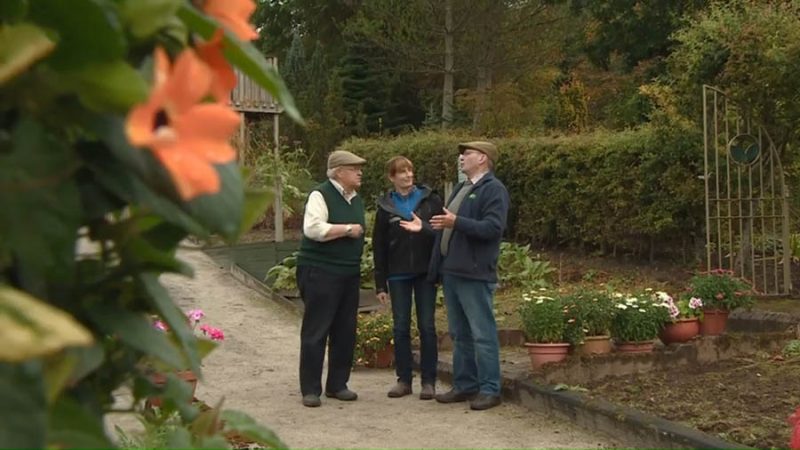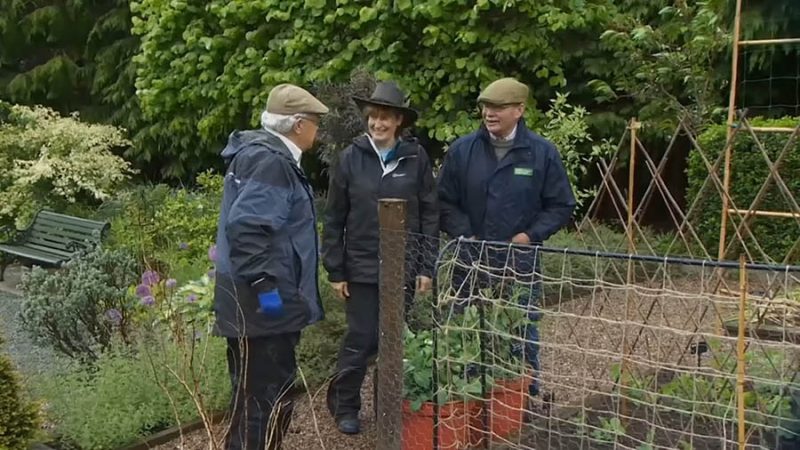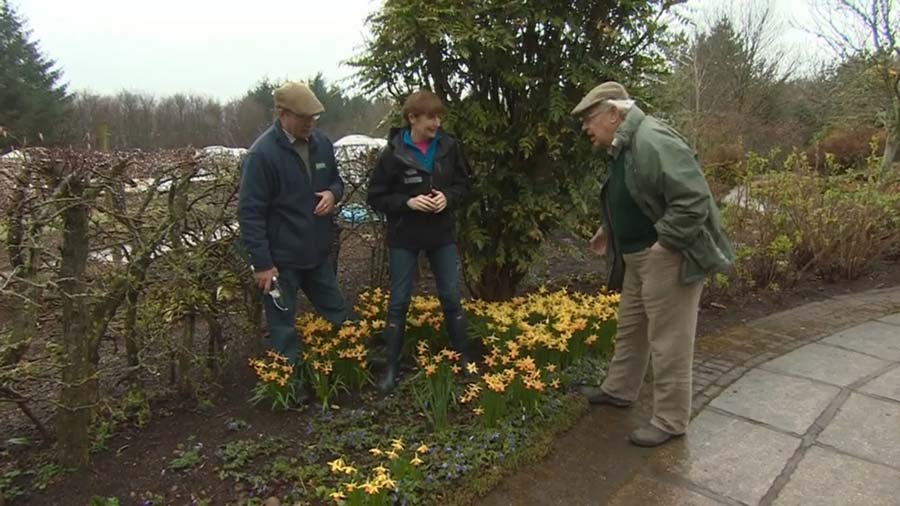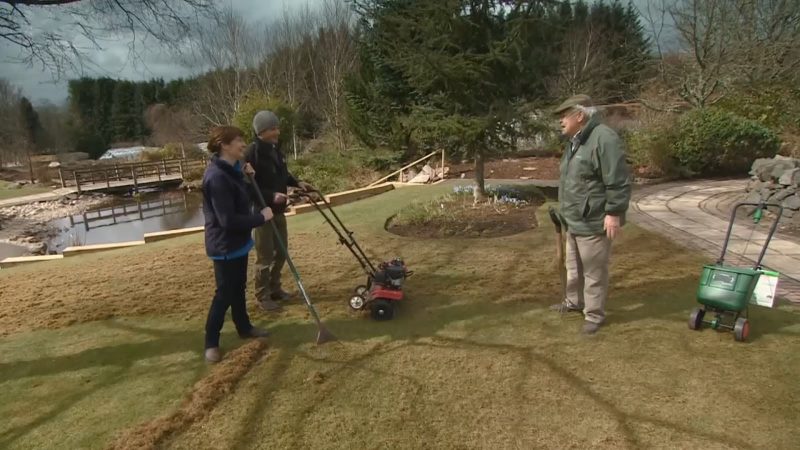In Beechgrove Garden episode 25 2016, leaves are falling in the garden but that’s not necessarily a bad thing as Jim uses them to make lovely leaf mould. He also shows the steamy secrets of his new hot box composter. Carole makes her last visit to Mieke and family in rural Aberdeenshire where they are gardening on a budget and this week they learn how to shred material to make economical but pretty paths.
Jim knows very well that gardening is good for you but this week it’s especially so as he marks the 10th anniversary of Trellis, which is designed to support therapeutic gardening as he visits a really restorative nursery and garden, Solstice, in Banchory-Devenick.
Beechgrove Garden episode 25 2016:
Overwintering vegetables
A month ago Jim repeated a little exercise we did last year in the polytunnel – planting overwintering veg for harvest in late winter and spring next year. They did very well last year but last winter was quite mild at Beechgrove. The Pak choi did particularly well, so this year again we have a range of vegetable plants which have been planted both in the polytunnel and in raised beds outside to see how they do.
Hot bin compost and leaf mould
Leaf mould is an invaluable soil conditioner and/or mulch and is so easy to make that everyone should be doing it. The easiest way is to fill black plastic sacks with fallen leaves from deciduous trees. Last year we did precisely that and with holes in the bags to allow moisture in and the bags positioned in a sheltered place well – rotted leaf mould.
Garden on a Budget
Over the 2016 season Carole has been helping Mieke Guijt who had recently moved to Kennethmont in rural Aberdeenshire to get the most out of her garden without spending a huge amount of money. This was the last visit for this year and over the last week Mieke had been very busy testing out a range of 4 garden shredders for material to use as mulching material and woodchips.
Plant features and seasonal work
Every autumn across the Northern Hemisphere, reduced daylight hours and temperatures send message to trees and shrubs to start to prepare for winter. Deciduous plants lose their leaves but before they are shed they change colour spectacularly – as the formerly green leaves caused by the pigment chlorophyll turn to brilliant shades of yellow, orange and red. These colour changes are the result of transformations in these leaf pigments. Even at this stage in October there are some wonderful colours in the garden to excite the senses.




